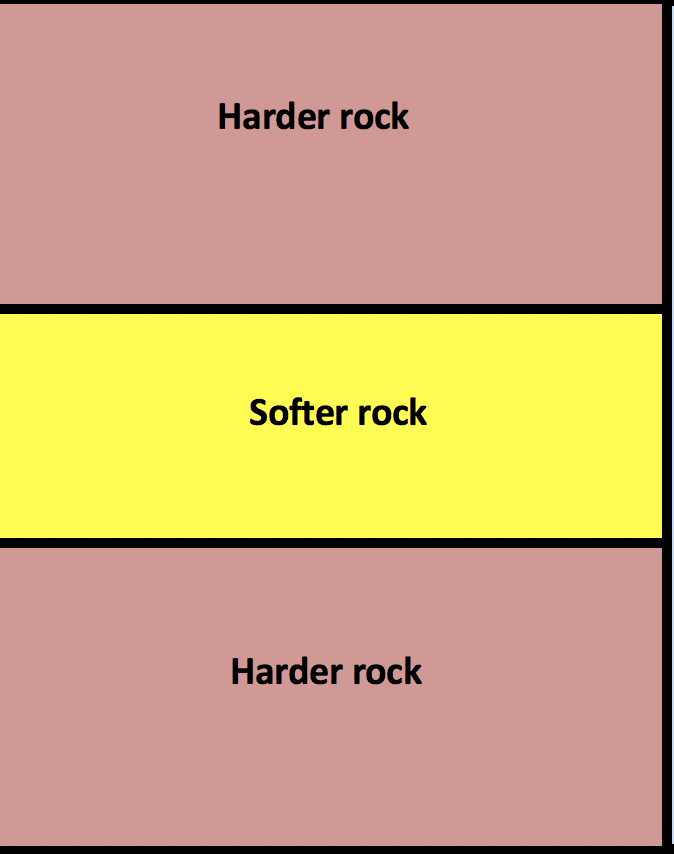Geography Coastal Environment
- Created by: SammieZ
- Created on: 12-01-20 01:49
Coastal processes
Marine Processes
Waves
Formation:
-
Wind tugs at the surface of the water, causing the wave shape to move
-
Within a wave, each water particle moves in a circular motion and returns to its starting point
-
From this point on, water is also moving forward, not only energy
-
When a wave moves into shallow water near the coast, it is distorted until it breaks, as friction is slowing the base of waves down
-
Water rushes up the beach (swash)
-
Then drains back down (backwash)
The amount of energy a wave is affected by:
-
The speed of the wind
-
The length of time the wind has been blowing
-
The fetch (distance) of open water over which the wind has been blowing
Constructive and Destructive Waves:
Diagram
Constructive
Destructive
Erosion, Transportation, and Deposition
Erosion: the wearing away of rocks, stones, soil by the waves
-
Hydraulic Action- the force of waves compress air into cracks
-
Attrition- rocks hit each other when being carried (doesn’t erode coast)
-
Corrosion- Minerals in cliff dissolved by water due to the chemical reaction
-
Abrasion- Waves throw rocks at the cliff and drag it down (act like sandpaper)
Deposition: the dropping of sediment that was being carried by waves
-
Depositional landform produced when sediments accumulate faster than they are eroded (take place in sheltered areas with low energy waves)
Transportation: The movement of sediment along a coastline (done by longshore drift)
-
Suspension, solution, saltation, traction (smallest -> biggest)
-
Depend on the size of sediments
-
Longshore Drift
-
Waves, caused by friction that occurs when the wind blows over water, bring eroded material towards land
-
The direction of waves determined by prevailing wind
-
Due to gravity, sand particles move straight back down the beach (perpendicular to the coast)
-
The process continues until meeting an obstruction
-
Longshore drift creates landforms such as spits and bars
Land Processes: Subaerial
-
Erosion- the wearing away of rocks by wind and rain
-
Weathering- the breakdown of rocks in situ (stationary)
-
Biological Weathering- seeds that fall into cracks in rocks will grow when moisture is present. The roots of the plant put out force to make their way into cracks and in time can break up rocks.
-
Physical/mechanical Weathering- Freeze-thaw is when water gets into cracks of rocks, and the temperature falls below freezing, causing water to expand as it turns to ice. This expansion puts pressure on the rock around it.
-
Chemical Weathering- Acid rain can react with certain rock types. Carbonates in limestone are dissolved by these weak acids causing the rock to break up or disintegrate
-
-
Mass movement- the movement of material down a slope or cliff due to the force of gravity
-
Rockfall- Bits of rock fall off the cliff face, usually due to freeze-thaw weathering
-
Mudflow- Saturated soil (soil filled with water) flows down a slope
-
Landslide- Large blocks of rocks slide downhill
-
Rotational slip- Saturated soil slumps down a curved surface
-
Coastal Landforms
Erosional Landforms

Headland- An area of more resistant rock…
Comments
No comments have yet been made